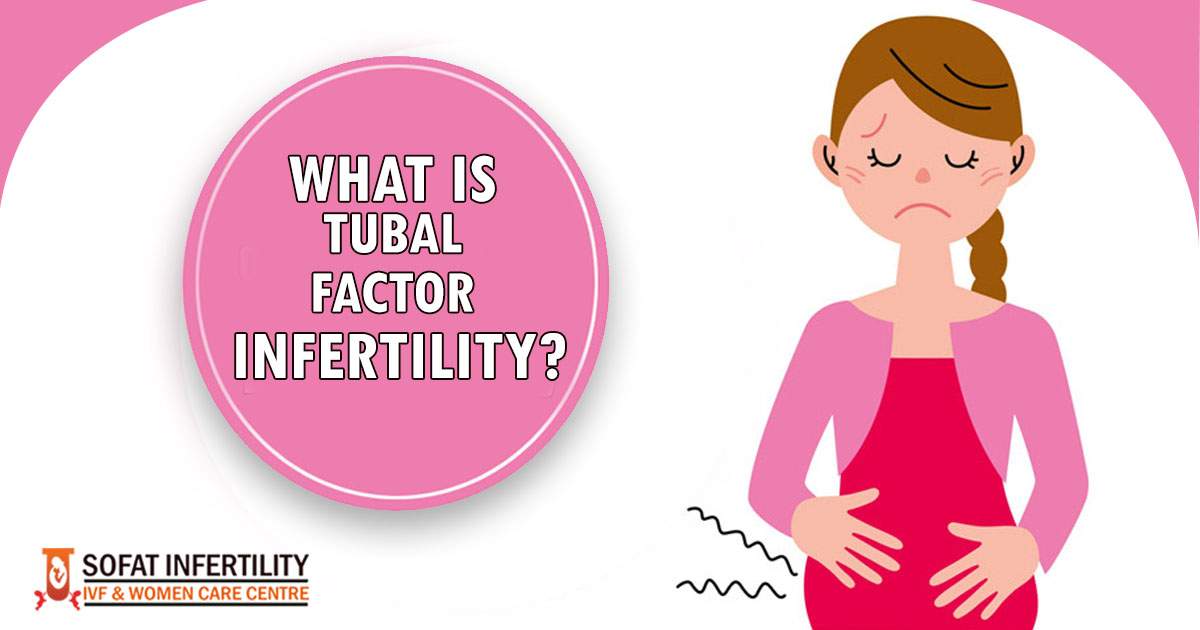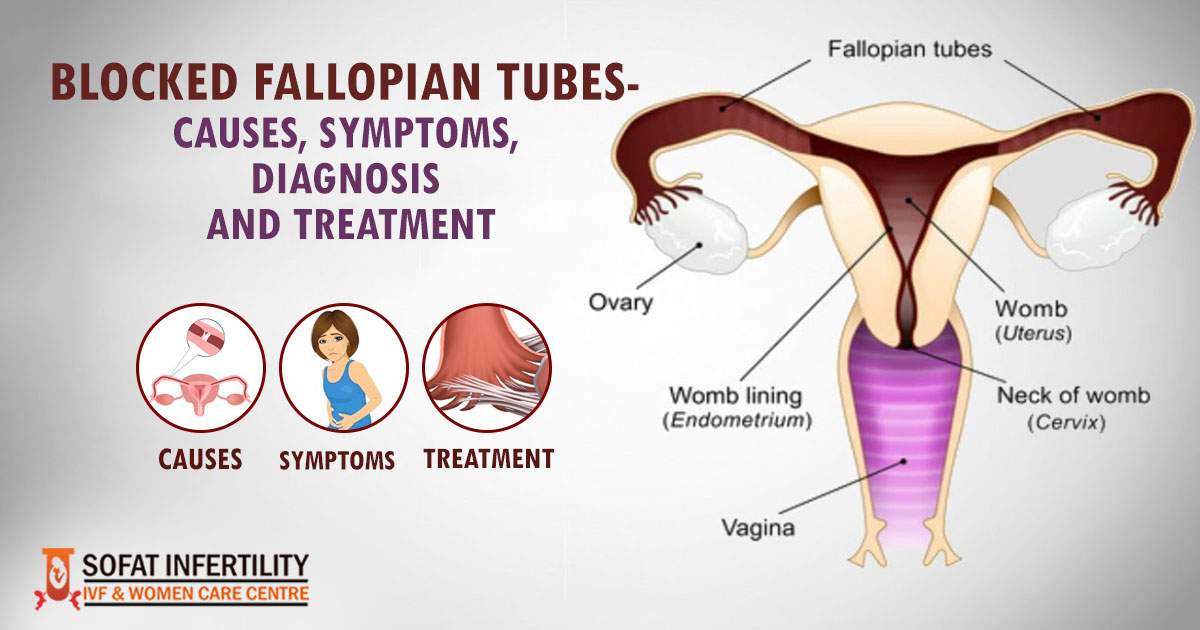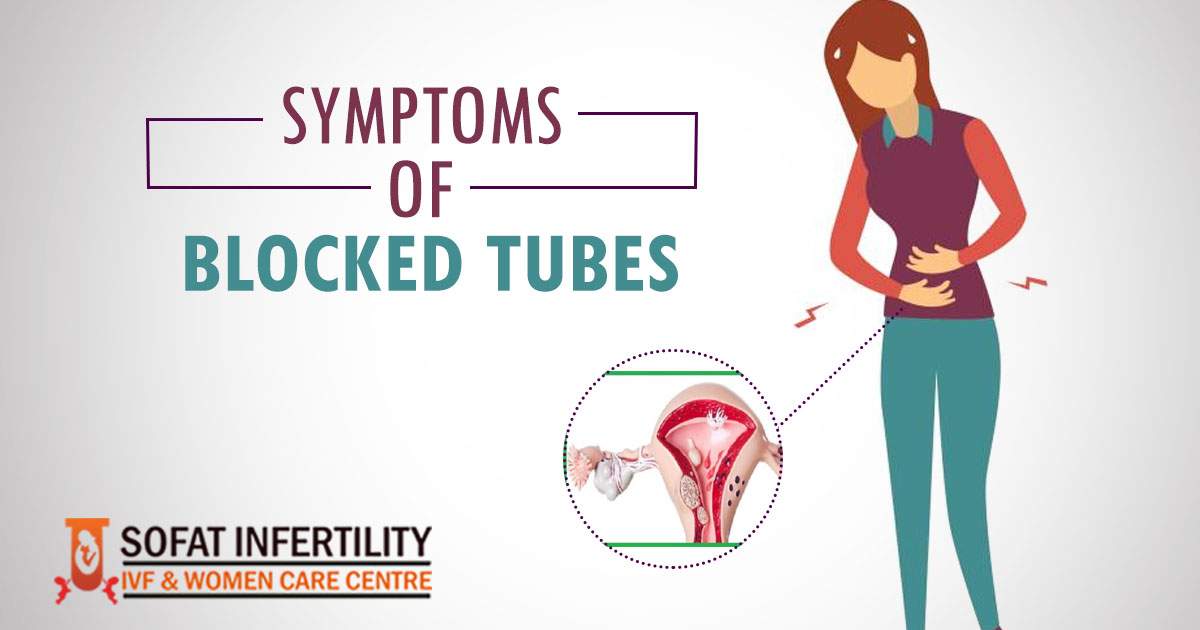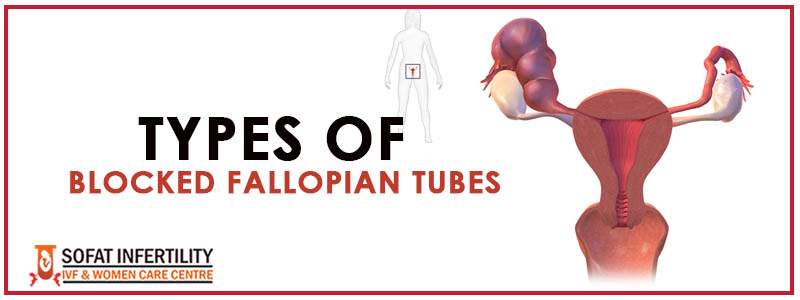![]()
The female reproductive system gets complete with the ovaries and fallopian tubes. Fallopian tubes ate two threads like tubes on both sides of the uterus which provide the way to the mature egg reach from the ovaries to the uterus.
When any hindrance stops the egg to travel from the ovaries to the uterus in the tube it means women have the blocked fallopian tubes. This blockage can be on one side or on both sides. This blockage of the tubes can lead to tubal factor infertility.
What is tubal factor infertility?
40% infertile women are suffering from the blocked tubes problems. The blocked fallopian tubes lead to the infertility issue so it is important to understand the reason for this problem.
During the ovulation of each month, one egg gets released from the one of the ovaries and that egg travel from the ovary to the uterus through the tubes. After the intercourse the sperm that enters into female body through the vagina that finds its way to meet the egg through the tubes. So the fertilization of the mature egg occurs when the egg travels through the tubal way.
In case of a blockage in this way can prevent the egg to travel to the uterus and even sperm cannot reach to the egg for penetrating and fertilizing it. So the blockage of tubes leads to infertility and prevent pregnancy.
Even if the blockage is partial then there can be a great risk for the tubal or ectopic pregnancy.
Symptoms of blocked tubes
There is not any confirmed signal for the blockage of tubes however the irregular menstrual cycles can be the hint of the problem.
Hydrosalpinx which is specific kind of blocked fallopian tube can lead to problems like abdominal pain on a lower side, unusual vaginal discharge. This condition of blockage lead the tube to dilate and fill with fluid and that fluid prevents the fertilization and pregnancy by stopping eggs and sperms.
Causes
The main reason for the block tubes is the infection such as the pelvic inflammatory disease (PID). The rate of the tubal factor infertility is considered as 12% after one period of the PID, 23% after 2 Periods of PID, 53% of three periods of PID.
Sometimes, fallopian tubes are occluded or also impaired by the endometritis.
Sometimes, bacterial infection after the childbirth and sometimes, intra-abdominal contamination such as appendicitis as well as peritonitis create the tubes block
Sometimes, dysfunction or distancing from the ovary will lead to the block of the fallopian tubes.
Distal tubal occlusion will lead to the increase rate of the HIV contamination.
Sometimes, Contraception may also lead to blocking the fallopian tubes.
In the rest of the circumstances, Tubes are healthy and treatment will help you to get the kids. Tubal ligation is the everlasting process.
Types of Blocked Fallopian Tubes
There are almost of 20% of the female infertility is related to the tubal causes.
Distal tubal occlusion: This is the problem that affects the edge of the ovary. This is actually related to the hydrosalpinx development and this is also induced by the Chlamydia trachomatis. A pelvic adhesion is the one form of this infection. In most of the cases, the fimbriae will be agglutinated. There is also certain potency that can also be protected.
Mid-segment tubal blockage is the result of the tubal ligation treatment. The portion of the tube is the common aims of the sterilization interventions.
Proximal tubal occlusion: This can happen after the infection such as the septic abortion. This is one of the tubal sterilization treatments.
Essure procedure: this is focused on the portion of the tube that is very close to the uterus.
How are the blocked tubes checked?
Sometimes, the complete assessment of the tubal capabilities is not possible, where ever the assessment of the tubal patency is not possible.
A hysterosalpingography (HSG) will help the surgeon whether the tubes are open and clear. This is the also possible to check the radio-opaque dye leaks or not in the stomach cavity.
Sonography will help you to establish the tubal irregularities such as the hydrosalpinx a sign of tubal occlusion.
Laparoscopy is used to scrutinize with the dye called the methylene blue. This could be inserted in the process called as the chromotubation into uterus. This is also demonstrated to go through the tubes when the cervix is occluded.
Laparoscopic chromotubation is considered as the gold standard of the tubal assessment. The tubal disorder is commonly connected with Chlamydia infection. The assessment of the Chlamydia antibodies is the economic verification of the tubal pathology.
Tubal insufflations are the one of the traditional attraction. This is the mature workplace in order to show the patency. This has been employed before the laparoscopic assessment of the pelvic organs.
Potential treatments
Infertility drugs: The treatment of the problem depends on the severity of the problem if you have one blocked tube then you can get pregnant even without much help. Infertility drugs can work well to increase the chances of ovulation.
Laparoscopic surgery: But if specialized x-ray detects the blockage for both tubes then there can be the option for laparoscopic surgery can open the blockage or even can remove the scar tissue. The chances for the success of the surgery depend on the age of the women. After the surgery, the chances of getting pregnant get increase up to 20-40%
Tuboplasty : Tuboplasty is one of the medical-surgical procedures that help to recover the patency and the working of the fallopian tubes. This also helps that conception should be accomplished. Tubal infertility is the one of the common sources of infertility. This is the most carried out just before the continuing development in IVF (In vitro fertilization)
Different kinds of tuboplasty are mostly created with the help of laparoscopy or laparotomy. This includes the
Fimbrioplasty: This includes the repairing of the fimbriated edge of the tubes.
Salpingostomy: This will make the hole for the tube.
Anastomosis: This will help to take an item from the clogged tube and helps to reconnect the left over a region of the tube.
Tubal reimplantation: This help to reconnect the tube to the uterus.
Unilateral or perhaps bilateral selective tubal cannulation: fluoroscopy or even hysteroscopy proximal tubal occlusion has been treated with the unilateral or perhaps bilateral selective tubal cannulation technique. This is the technique where the slender catheter is also progressed by the proximal part of the fallopian tube. This will help to recover the tubal patency salpingostomy.
The results of the tubal surgical treatment are linked with deterioration that mostly exists with the surgical treatment. But the progression of the adhesions will continue to be the biggest issue. Most of the patients with the operated fallopian tubes have the amplified chance of the ectopic pregnancy.
In vitro fertilization (IVF): Most of the blocked fallopian tubes are treated with the fallopian tubal surgical treatment. Tuboplasty has been designed to rebuild the patency to the tubes. So that, they can function regularly. This is the one of the accepted modern technology that is used in IVF (In Vitro Fertilization). This is the one of the cost-effective and less intrusive and the results are instant. Sometimes, strategies like hands on the physical therapy are also recommended for the potential patients. This will also help the fallopian tubes to function properly. ART (Assisted reproductive technology is mostly used in this case.
In vitro fertilization is the process in which the egg is fertilized with sperm outside the human body. This is the one of the best treatment for infertility. In this process, egg or eggs has been taken from the woman ovary and then allow the sperm to fertilize in the fluid-filled medium in the lab. This is also dependent upon the woman’s natural cycle in order to biologically gather the egg for the fertilization. This is considered to be the natural cycle of the IVF. Then the fertilized egg is transmitted to the patient uterus. However, the IVF treatment can help you to get pregnant without curing the problem as in this procedure sperms and matured eggs communicate outside the body.
IVF is mostly substituted with the tubal surgery. The existence of the hydrosalpinx is one of the drawbacks of the success of the IVF. A laparoscopic surgical procedure is mostly used in order to eliminate the hydrosalpinges.
Risks for Fallopian Tube Surgery and Procedures
There may be chances of the regrowth of the scar tissues and adhesions. There may be chances that tubes may get blocked again. This blockage may adhere to the abdominal walls, other reproductive organs.
If there is the opening of the abdomen, then there may be an increased chance of the pelvic infection.
There may be chances of the Ectopic pregnancy.
There is no need to be more cautious, we are providing the best result in treating the blocked fallopian tubes treatment in India and we are also recognized as the one of the best IVF centre in India.











